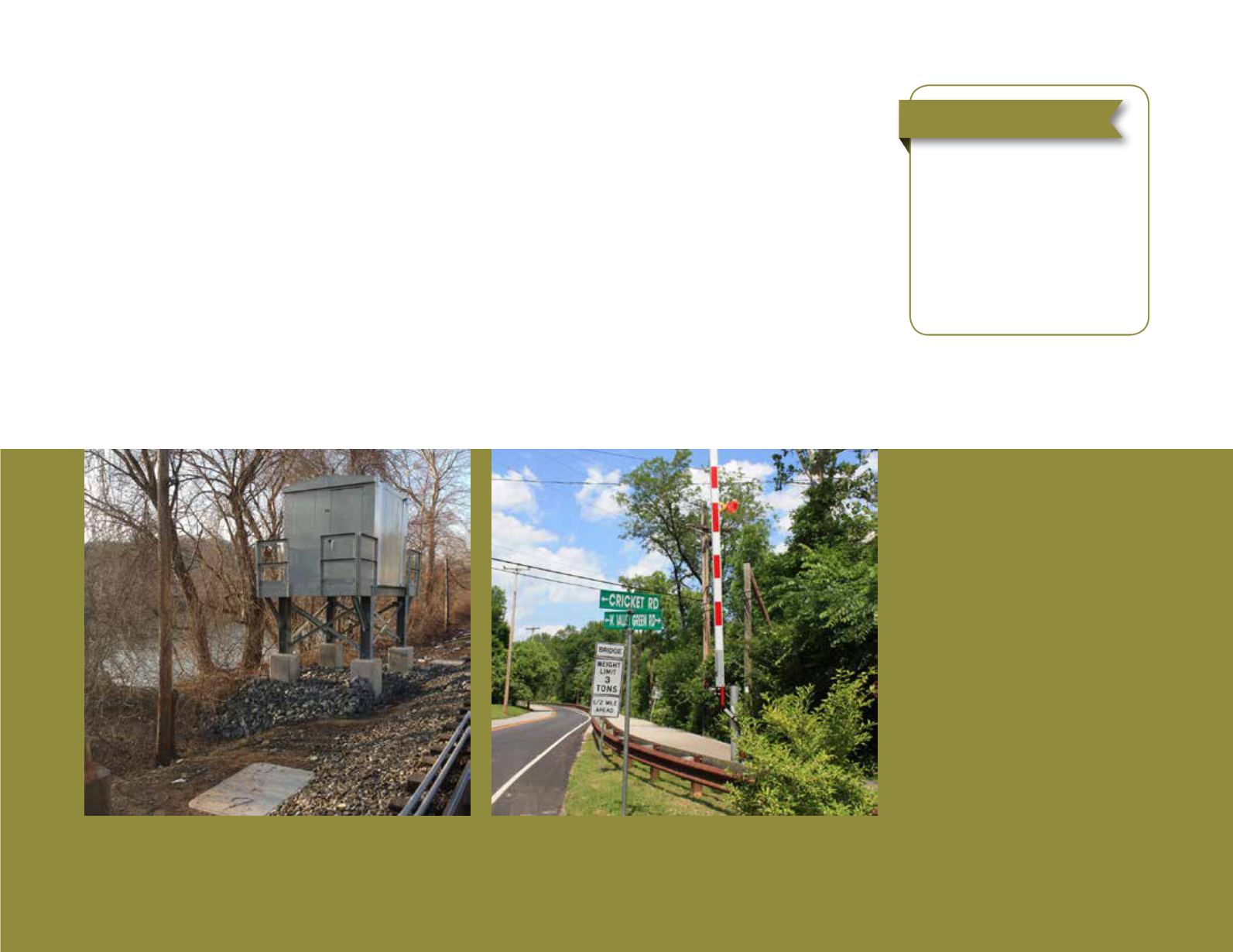
Montco 2040:
a shared vision
■■ Newly adopted floodplain
ordinances prohibiting
structures in the floodplain
■■ Flood warning systems
installed
■■ Homes and businesses
removed from the
floodplain or elevated
Measuring success
… work with local municipalities, developers, emergency providers, PennDOT, SEPTA, and
emergency management agencies to limit development in the floodplain and limit the impact
of flooding
With climate change, flooding seems to be a more common problem. The best method of dealing with flooding is to keep
development and fill out of the floodplain. All local floodplain ordinances should prohibit fill and buildings within the
floodplain, except for brownfield sites in redeveloping areas. Communities that choose to allow buildings in the floodplain
must require these buildings to be elevated and floodproofed.
The impact of flooding can be reduced through an emergency services flood warning system; building code enforcement
for floodproofed buildings; good drainage system maintenance; acquisition and demolition of structures in the floodplain;
improved stormwater management; re-greening of old development; retrofitting and floodproofing of existing structures in the
floodplain; installation of flood control structures; and natural resources protection.
The county has a model floodplain ordinance that it will continue sharing with local municipalities while reviewing municipal
floodplain ordinances for their compliance with federal regulations. The county will continue to implement its Hazard
Mitigation Plan, which has a number of recommendations for addressing flooding. And the county will encourage partners to
plan for flooding, which will continue to occur.
This elevated train signal hut illustrates changes designed to
make infrastructure more resilient to flooding and climate
change.
This red and white floodgate can be lowered when the road
floods to stop vehicles from driving into unsafe floodwaters.
New buildings
should not
be put in the
floodplain, except
for buildings on
brownfield sites
in redeveloping
areas.
41


